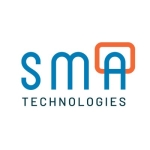What is our primary use case?
We started using AI in Document Understanding by leveraging it against our models for different documents from our customers, primarily in the finance space. We have also used AI to train models for land management documents, helping them learn as we receive new document types.
Recently, we've used it to analyze documents and articles online to understand sentiment toward our company. We analyze and summarize things people say in articles or posts elsewhere, which allows us to collect industry trend data. We are considering using Clipboard AI for smaller, ad-hoc data processing tasks because it can sometimes be more effective than Document Understanding.
How has it helped my organization?
We get a lot of projects that are on relatively short notice for the workload that comes with them. Historically, we would rely on leveraged services or contractors to do that work manually, which is costly. You can save tons of money by automating data entry, transcription, etc. Nowadays, as we get busier and busier, the work seems to bog people down more and more with tasks. UiPath gives them opportunities to free themselves up and focus on themselves.
We initially focused on time savings and how we could free people up more. We achieved that over time, but it took a while to get there in the first few years. We came in with some use cases that we later learned were not great fits for automation. We learned through trial and error and got better at identifying better use cases for automation. We've succeeded, and it's worked out for the better.
But aside from saving people time, we also wanted to ensure that we brought in new technology to leverage some of those processes. UiPath forces you to look at the process from a high level and take a step back. You might have had the same person doing the same process for 10 years or more without thinking about how you can use new technologies to eliminate the process or make it more efficient. UiPath forces you to look at the process as a whole and the systems it's tied to. When you step back and look at it, especially with new people coming in, they start offering suggestions, like "Wait. You've been sending this email every time? That's something we can automate now. Oh, you've been trying to pull this information from a document and copy and paste it? That's something we can automate, too."
If it's not automation, it's something else. We can look at other tools and applications our company brought in. There's usually some other solution they can use, automation or not. The natural way to work with it is by lining out a process and laying out all the steps on a workflow diagram. It allows you to rethink your process as you're doing it.
Instead of just following step-by-step documentation or the way you've done it all the time, it gives you a chance to see it from a new perspective, and that's just part of working with the tool. As you build that out in UiPath using task capture or anything else, you will see that naturally and start thinking about ways to handle it better.
Automation has freed up employees for other tasks. That's something that they like about it. The other thing it's done is build some excitement about IT and solutions in general. They're always looking at the new function that's coming out. They want to see what else we can do for them. Automation isn't always the answer, but we can get them to engage and talk to us during office hours to attempt to solve their problem with UiPath. We can also learn more about what they do.
We're getting closer to our customers, talking more about their work, and they're feeling a closer bond with us. They're feeling like they trust us more in IT and are starting to see what other tools we have. Maybe automation wasn't the right fit, but we will always find better opportunities by building a report that sends an automatic email and an application for them in low-code software. UiPath has helped create a much better and fluid engagement process for us and our customers.
Since it's a low-code tool that's easier for them to approach and understand, they're also more involved in the design process. The learning curve is shorter. When Studio first came out, it wasn't as user-friendly as they had hoped, but StudioX came out in 2020 and was approachable for most of our users. That's what our citizen developers use most of the time now. We have far more citizen developers with StudioX than unattended developers with Studio.
What is most valuable?
Within UiPath Cloud itself, UiPath Insights has been excellent. Insights is one of the newer features we were excited about because we built custom reports, captured all that data in one place, and leveraged it in different areas. That was a challenge for us and created a support burden. We're automation developers, not report developers. When leadership wanted a new metric or anything, figuring it out was always a pain.
Insights has built-in mechanisms for tracking time savings, usage reports, and the overall health of your automation program. Having that functionality built in by default is critical. I click it and tell it the report that I want to generate. It'll build it for me automatically, and I can share it with people who need it. It has made a huge difference for people administrating the platform and reporting success to leadership over time.
What needs improvement?
UiPath needs work on the governance side. For example, they released Studio Web this year and have started work on its governance, but it initially lacked control from an administration standpoint. You could not lock down third-party libraries or other applications and integrations it had built in.
For example, people could use a Google account, but we might have concerns about that from a security standpoint. Cybersecurity is taking a more significant place in IT, and we're mindful of that. Having explicit governance over what our users can do inside those technologies is essential. We hope to see that more over the next few years. We've given a lot of that feedback as customers to UiPath, and they've been working hard to get that into the pipeline and implement those changes.
For how long have I used the solution?
I have been using UiPath for about six years now.
What do I think about the scalability of the solution?
UiPath can grow with us, especially since they developed a cloud environment. When we started, we had to make many changes in Orchestrator and other areas as we scaled up. We scaled up fast and automated dozens of automations in the first few years.
However, we found that the default setup for the UiPath Orchestrator in 2018 didn't have all the features we needed to administer it to our customers. We had to build custom solutions in-house, but they've released many new features in UiPath Cloud that simplify management.
How are customer service and support?
I rate UiPath 10 out of 10. The executive support team and customer success team have been great. All of them play a role, and they're super knowledgeable. If they can't solve your problem, they know who can and connect you with them quickly. We've leveraged them extensively and will use them more over the next couple of years as we finish our cloud implementation.
There are still many features we don't use, and we constantly go to them for guidance and help on how to use them best and what they've done with other customers. They provide tons of great insight and have a solid network.
How would you rate customer service and support?
Which solution did I use previously and why did I switch?
We didn't have a low-code automation platform. We developed most of our automations using PowerShell. We didn't have citizen developers, but most business users would use Power Automate. Back then, it was known as Flow on the Power Platform.
Our corporate leadership decided to bring in UiPath. It wasn't an IT decision. They wanted something they could start using for their daily tasks. They didn't think we had something that could automate things well, and PowerShell is limited from a scripting and API standpoint. They wanted to automate things in SAP, and the APIs and other things are locked down in a custom shop like ours. We can't integrate with our environment in any way we want, so we need something that can interact through the interface. UiPath does that. It can click and type everything through the interface.
The leadership started the process. IT got involved and supported it. Since then, we've helped it grow throughout the company. It's not just finance anymore.
How was the initial setup?
The initial setup was complex because UiPath didn't have many pipelines built in. We had to build custom pipelines for the technology we use. It was TFS at the time, and now we use Azure DevOps. I helped with the VDI setup. For unattended automations, you must have a platform or system they can run on. We had looked at doing HDRs—high-density robots—that UiPath.
Due to applications such as SAP, it couldn't run on a server-side setup. It had to be on a desktop, so we used a VDI for every bot we created, and I helped create the user policies for our accounts and device policies for each VDI. I also set up all the installations and the presets. I helped set up a framework for that over the first year, from 2018 to 2019. We smoothed out the process from there. That was something we had to do on our side. It will be unique for a customer depending on their environment.
What about the implementation team?
We used a partner during the initial setup.
What was our ROI?
The leadership is pleased with the outcomes. With Insights, we can show them how much time we're saving with each process. We document savings in hours rather than monetary terms.
What other advice do I have?
I rate UiPath 10 out of 10.
Which deployment model are you using for this solution?
Public Cloud
Disclosure: My company does not have a business relationship with this vendor other than being a customer.




















